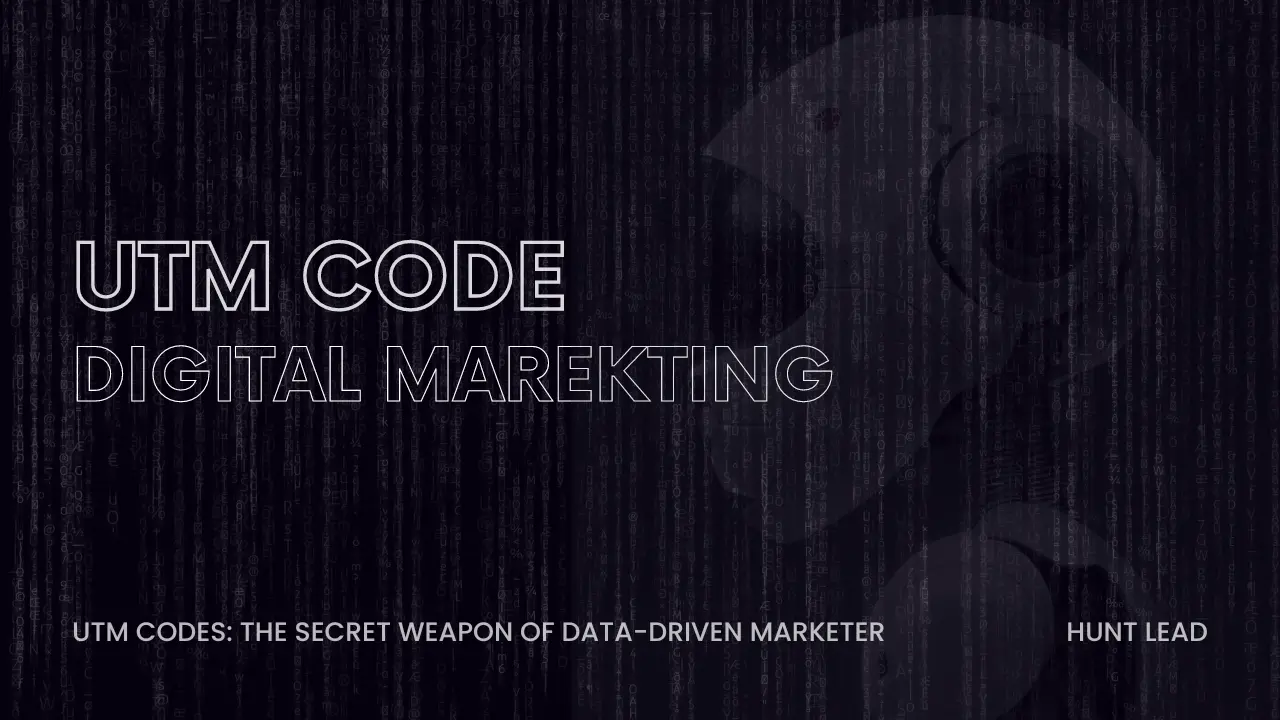
Data is the most important thing in the constantly changing world of digital marketing.. Marketers constantly strive to understand where their traffic originates, which campaigns resonate, and ultimately, what drives conversions. Here’s where UTM codes enter the scene – a powerful tool for tracking campaign performance and gaining invaluable insights.
This blog serves as your comprehensive guide to UTM codes. We’ll delve into their definition, explore how to implement them effectively, dissect their benefits, and unveil why they’re essential for any data-driven marketer.
Unveiling the Mystery: What are UTM Codes?
UTM stands for Urchin Tracking Module. Developed by Urchin Software (later acquired by Google), UTM codes are short snippets of text appended to the end of a URL. These codes act like invisible tags, silently collecting data behind the scenes. When someone clicks a UTM-tagged link, the code transmits information to your analytics platform (like Google Analytics) about the origin of that click.
Think of UTM codes as tiny detectives embedded within your links. They gather Intel on where your website traffic originates, providing valuable clues about your marketing efforts.
Decoding the Code: Understanding UTM Parameters
UTM codes are comprised of five key parameters, each playing a specific role in data collection:
- utm_source: This parameter pinpoints the website or platform that sent the visitor to your site. Examples include “facebook,” “google,” or “newsletter.”
- utm_medium: This identifies the marketing channel used. Common mediums include “organic,” “cpc” (cost-per-click), or “email.”
- utm_campaign: This specifies the specific marketing initiative the link belongs to. It can be a campaign name like “summer_sale” or “webinar_registration.”
- utm_content: This parameter helps differentiate between similar links within the same campaign. It’s useful for A/B testing or tracking specific CTAs (call to actions).
- utm_term: While less commonly used, this parameter identifies paid keywords associated with the link, particularly for paid search campaigns.
Here’s an example of a UTM-tagged URL:
https://yourwebsite.com/domains/?utm_source=facebook&utm_medium=organic&utm_campaign=brand_awareness
In this example, the traffic originated from an organic post on Facebook as part of a “brand awareness” campaign.
Pro Tip: Remember, UTM parameters are case-sensitive. Ensure consistency to avoid data discrepancies.
Building Your Arsenal: Creating UTM Codes
Creating UTM codes is a breeze! Several online tools can simplify the process, including Google’s Campaign URL Builder (https://support.google.com/analytics/answer/1033867?hl=en).
Here’s a breakdown of the steps:
- Access a UTM code generator.
- In the designated field, enter the URL of your website.
- Fill in each UTM parameter with the corresponding information.
- Click “Generate URL.
Voila! Your UTM-tagged URL is ready for action.
Unleashing the Power: Benefits of Using UTM Codes
So, why should you invest time in UTM codes? Here’s why they’re a game-changer for data-driven marketers:
- Campaign Clarity: UTM codes provide a clear picture of which marketing campaigns are driving traffic and conversions. This allows you to identify high-performing campaigns and optimize your marketing spend.
- Source of Truth: Traffic sources often get misattributed in standard analytics reports. UTM codes offer a more accurate view of where your traffic originates, eliminating guesswork.
- Granular Insights: With UTM codes, you can delve deeper into your data. Imagine understanding which social media platform (Facebook or Instagram) or specific email newsletter drives more qualified leads. This granular detail empowers you to refine your strategies for maximum impact.
- A/B Testing Powerhouse: UTM codes are invaluable for A/B testing different marketing elements. By tagging links with variations of CTAs, landing pages, or ad copy, you can track user behavior and identify winning strategies.
- Content Performance Tracking: Are certain blog posts or articles generating significant traffic? UTM codes unveil the content driving engagement, allowing you to replicate success and tailor your content strategy.
Conclusion
UTM codes are more than just snippets of text; they’re powerful tools that unlock a wealth of data-driven insights for marketers. By implementing them effectively, you gain a clear understanding of your marketing performance, identify areas for improvement, and ultimately optimize your campaigns for maximum ROI. Remember, consistency is key. If you don’t know how to do it then you can take help from us just search Digital Marketing Company in Gurgaon and we will help you to track all your campaigns. Take the time to develop a UTM tagging strategy that aligns with your overall marketing goals. Embrace UTM codes, and watch your marketing efforts soar!